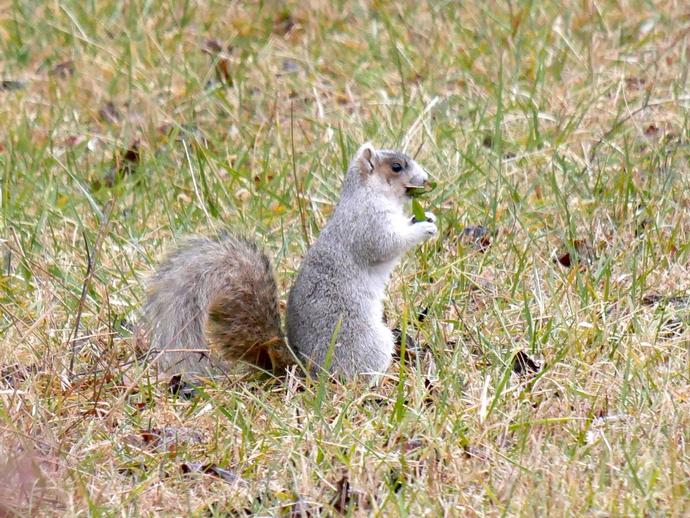March 2, 2021
Ben here with another #BenInNature update presented by our friends at Carter Bank & Trust!
This week, we're looking at some of my favorite never-before-seen photos of critters we've looked at previously. One of my very first nature posts was about the fox squirrel (Sciurus niger), North America's largest tree squirrel, and today we're looking at another fox squirrel I photographed just a couple of weeks ago!
While gray squirrels can have differing coat colors, they can't hold a candle to the fox squirrel when it comes to coat variation. I have a decent population of fox squirrels on my property, and it seems as though no two look alike. Fox squirrels generally have a reddish coat and white spots on their nose and the tips of their ears, but this one has more white and gray in its coat than any other fox squirrel I've ever seen.
Fox squirrel coat coloration tends to vary depending on where you find the squirrel. In the northern and western parts of their range, they tend to be more on the red side, while fox squirrels in the Coastal Plain tend to have more silver in their coats like this one. You can also sometimes spot melanistic (all-black) fox squirrels, particularly in the southern parts of their range.
Not too long ago, VMNH Curator of Mammalogy Dr. Nancy Moncrief and several colleagues wrote an interesting paper about the origins of melanism in fox squirrels and gray squirrels. To learn more, check out this link to an article about the study that appeared in Smithsonian Magazine:
https://www.smithsonianmag.com/smart-news/interspecies-breeding-responsible-some-squirrels-black-coloring-180972921/
ABOUT #BenInNature
Social distancing can be difficult, but it presents a great opportunity to become reacquainted with nature. In this series of posts, Administrator of Science Ben Williams ventures outdoors to record a snapshot of the unique sights that can be found in the natural world. New updates are posted Monday - Friday, with previous posts highlighted on the weekends. This series of posts is made possible thanks to the support of VMNH Corporate Partner Carter Bank & Trust (www.cbtcares.com)
NATURE PHOTO IDENTIFICATIONS
If you discover something in nature that you would like help identifying, be sure to message us right here on Facebook with a picture (please include location and date of picture) and we'll have our experts help you identify it!

 Hours & Admissions
Hours & Admissions Directions
Directions

